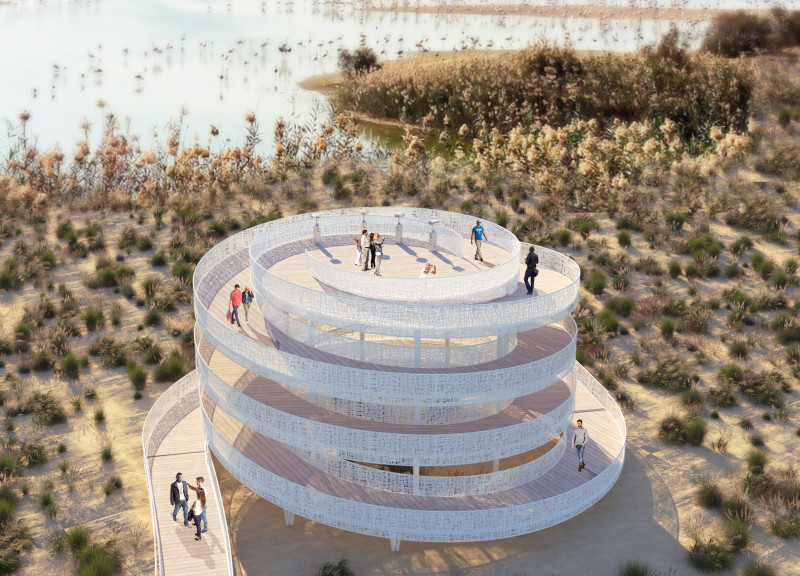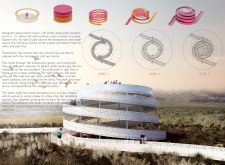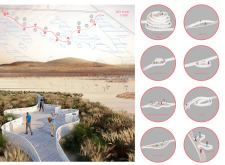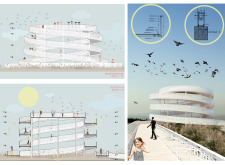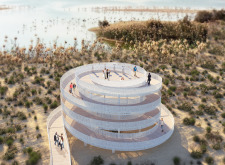5 key facts about this project
The design features an observation tower and walk path located in a preserved desert landscape. The goal is to offer visitors a chance to experience the natural surroundings, including the mangroves and various desert plants. The design concept focuses on blending the built structures with the landscape, allowing people to explore and appreciate the area from different heights and angles.
Design Concept
The design emphasizes the connection between buildings and nature. Elevated walkways create an engaging experience as visitors move through the wetlands and around the native vegetation. The upper walkway crosses over the wetlands, providing wide views of the landscape, while the lower walkway and the observation tower sit on solid ground, allowing for a closer interaction with the environment.
Accessibility Features
Accessibility is an important part of the plan. The observation tower has a circular shape that transitions into a spiral design, making it easy for everyone to get around, including those with mobility challenges. This spiral configuration allows for smooth two-way movement and improves the visitor experience within the structure.
Site Interaction
To further enrich the experience, the design includes several activity zones along the walk path. These areas invite exploration and observation, letting visitors engage more fully with the ecological features of the preserved desert. The thoughtful arrangement encourages different interactions, helping individuals connect with the unique aspects of the landscape.
Material Considerations
The choice of materials reflects a concern for sustainability and a desire to blend with nature. The walkways are covered with a mesh made from yarn and grid texture, which enhances both the practicality and appearance of the paths. This material choice aligns with the goal of reducing ecological impact while providing a sturdy and attractive experience.
The observation tower ends with a design that offers expansive views of the wetlands, inviting visitors to reflect on the relationship between architecture and the natural environment.


